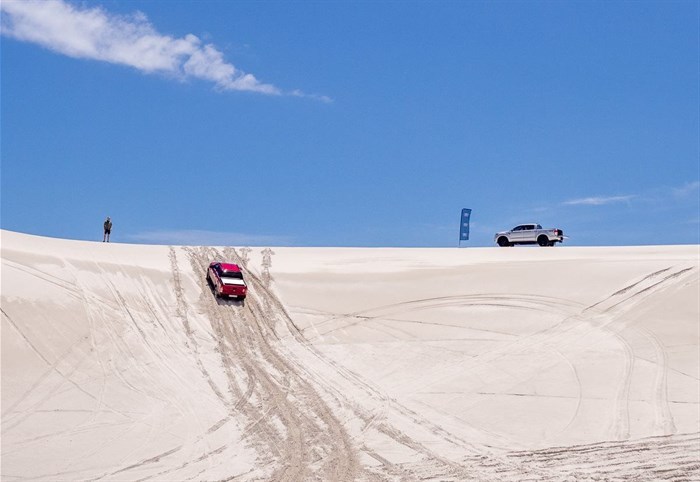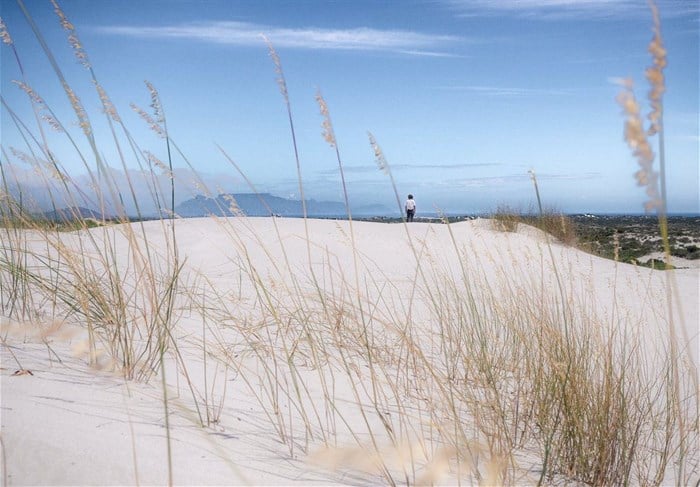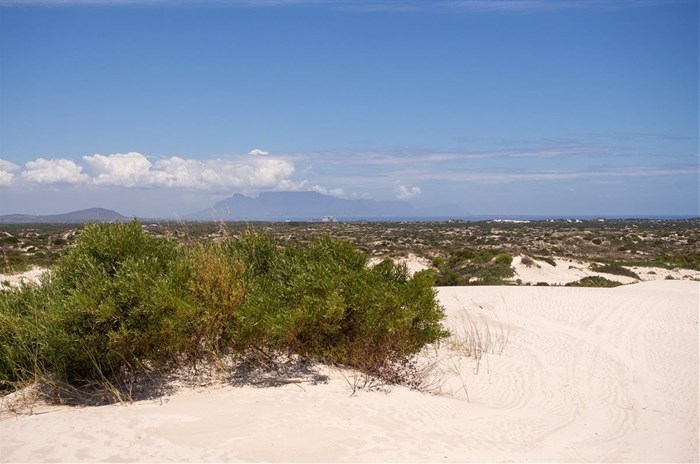
Top stories




LegalTsotsi star’s house, bought with lottery funds, frozen by Special Tribunal
Raymond Joseph 15 hours


More news



The reserve is about 3,000 hectares of which 480 hectares are sand dunes. The rest of the reserve is fynbos, notably Cape Flats Dune Strandveld and the critically endangered Atlantis Sand Fynbos.
Managed by the City of Cape Town, permits are required for 4 x 4, quad biking or sandboarding. If you want to walk and picnic, park your car at the entrance and walk in for free. (See bottom of the post for costs, opening hours and other details.)
The reserve is a great spot for fun in the sun, picnics, hikes, and views of Table Mountain from the higher points. Wildlife in the reserve includes steenbok, Cape grysbok, small grey mongoose, Cape dune mole rat and caracal.
What is quite interesting is that below the surface of this dry landscape is a huge underground aquifer, supplying drinking water to the greater Atlantis and surrounding area.
Because the dunes are soft sand and constantly moving, there is no negative environmental impact related to driving on them. Just a few hours after of putting down tracks, the wind will have removed all trace and the dunes will be restored to pristine, untouched beauty.
Ford invited a group of women to have some fun and experience driving in sand. We started with breakfast at Milkwood on the Atlantic Beach Golf Estate, had a short briefing in the conference room and then hit the road for some action.
I got behind the wheel of the Ford Ranger Stormtak in Lucid Red, the best looking car by far on the day.
This is what I learned about driving on sand.
If you are in a Ford Ranger or Everest it is as easy as 1,2,3 and 4.
1. Deflate the tyres by about 50%
2. Start the car and disengage ESP (electronic stability program)
3. Switch to 4 L (low) on the mode dial.
4. Engage S for sport mode on the automatic gear selector.
The high ground clearance is a huge plus as is the Hill Descent Assist which kicks in automatically when going down an incline.
Don’t drive along the face of the dune, you might roll over. Rather angle up or down.
How to avoid getting stuck in the sand.

In the briefing, and later from experience on the course we learned some more basics for sand driving.
• Don’t hesitate or you will get stuck.
• Avoid breaking so you don’t plough and get stuck.
• Going too slowly will make you sink into the sand and get stuck.
• Make sure your wheels are straight or you will crab, sway, and get nowhere.
• Keep your eyes and body straight and look only at where you are going, to stay on course.
Apart from driving around the flat areas in the dunes, we did two fun exercises to assess our newfound knowledge.
The first was driving a 500 m figure of eight on a slight incline, and the second was driving to the top of a 40m high dune.
For me this translated into looking at the hill and then flooring the car until I got to the top.
Yes! I was one of the drivers proclaimed, "Queen of the Hill."
On the figure of eight I used a similar approach, foot down hard, eyes on the flag, no use of brakes and kicking up sand on the turns. The power and holding capabilities of the Ranger are phenomenal. In all honesty if you trust the vehicle and hold your nerve, this car drives itself.
We ended the day on the crest of a dune with magnificent hazy views of Table Mountain in the distance, and a decadent picnic lunch on the tailgate of our trucks.
The wind was evolving from a breeze to a gale as we headed out, obliterating all evidence of our visit.
I can highly recommend this spot for nature therapy, there are many ways to enjoy this space and photographers will love it.

Useful info before you go.
Distance from Cape Town city centre is 53 km- about a 30 to 45 minute drive depending on traffic.
Check the weather. If the wind is blowing it can be unpleasant.
Sand in your teeth, hair, eyes, and clothes is not the most fun you can have on a day out.
There is secure parking, ablution blocks and a manned boom and ticket office at the entrance.
No alcohol is permitted inside the reserve.
September–February: 7am–7pm
March-August: 8am–6pm
Note that the permit office on site is only open between 8am and 15:30.
I would recommend spending at least 3 hours in the reserve, aiming for early morning or late afternoon when the light is a bit softer and the glare from the dunes is not as hectic.
Walk-In visitors are free
Link to all other permit fees here.
For more info contact the reserve.
Telephone: 021 400 6000
Email: az.vog.nwotepac@evreser.erutansdnaztiw
